10 ways to cut water pollution on an outdoor pig unit
Soil management planning should be a key consideration for pig producers looking to take up a tenancy of new land for outdoor pigs or those moving pigs to a new site. Farmers Weekly looks at how producers can reduce risks of soil erosion and water pollution.
Rainfall patterns have changed significantly over the past 15 years and producers need to adapt the way they lay out and locate a unit to help deal with high rainfall events.
Avoiding soil erosion and surface water run-off is key to maintaining water quality in both groundwater and surface water.
While ensuring producers reduce the risk of water pollution and comply with important legislation, putting the groundwork into soil management can also help to retain valuable soil nutrients and maintain good soil structure.
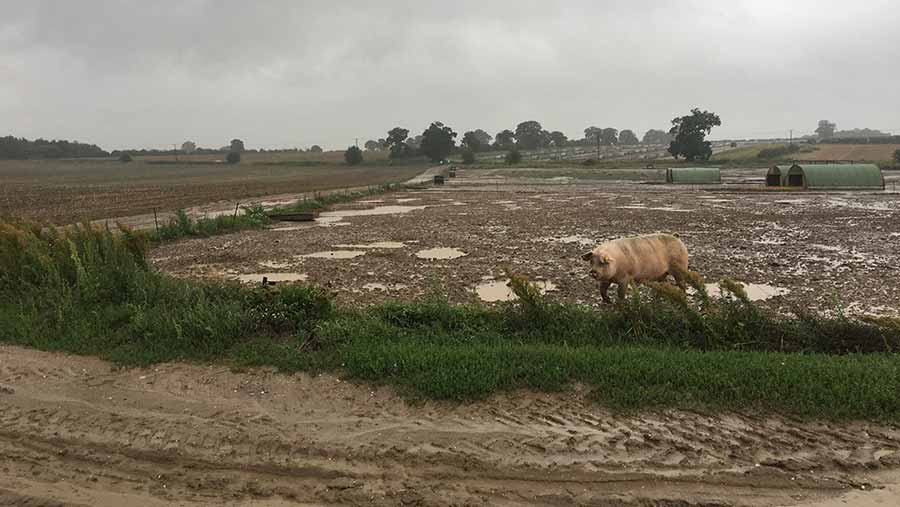
See also: Soil management in the spotlight at Normac demo day
Many producers are taking advantage of help and support from water companies, environmental organisations and AHDB Pork, which now has two knowledge exchange (KE) managers who are Basis qualified in soil and water management.
A group of East Anglian producers have met twice in the past couple of years with Anglian Water, Natural England, Norfolk Rivers Trust, the Environment Agency and AHDB Pork to look at practical options for better soil management.
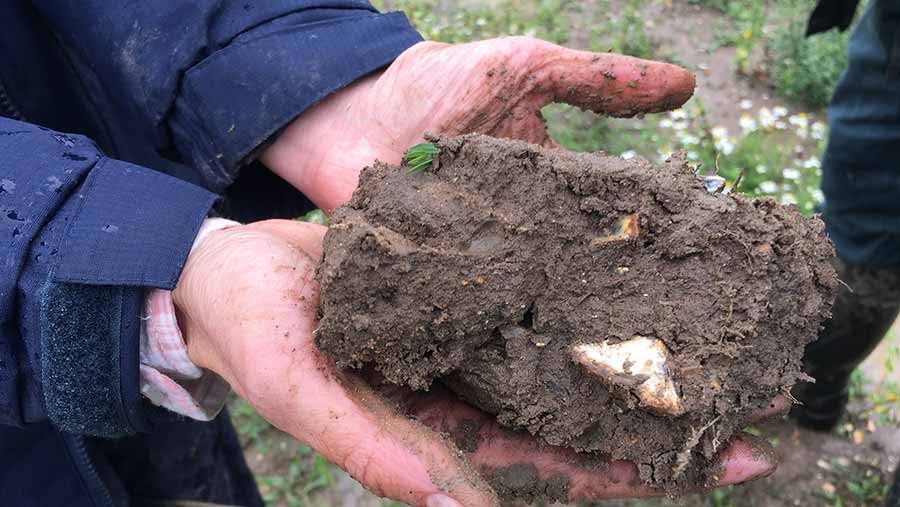
There is a great willingness for all parties to help each other and the same is starting to happen in other parts of the country now too.
Andrew Palmer, knowledge exchange manager for AHDB Pork, said: “We are seeing a positive shift to more environmental awareness on outdoor units, due to better communication and collaboration.
“In the East, about one-quarter of groundwater sources are affected by high nitrates and water companies are working with farmers on ways to improve management. Nitrogen is a valuable resource and we want to reduce the risk of it leaching into groundwater.
“There are regional differences too, so it’s important outdoor producers are aware of this and start to work with organisations in their area that can offer a lot of practical advice.”
AHDB 10 points assessing and reducing risk of water pollution
1. Check whether the site is in or near any restrictive zones and choose a suitable site from the outset. Be aware of nitrate vulnerable zones (NVZs), as well as groundwater source protection zones (SPZs), which relate to the risk of borehole pollution in the area.
2. Try to avoid sites in an SPZ1 (See “Groundwater source protection zones” below) altogether if possible and ensure you are applying good land management practice if they are in any of the zones.
Also aim to avoid sites where there could be a potential negative effect on other watercourses, field drains and Sites of Special Scientific Interest (SSSIs).
3. Find out the previous cropping and assess soil nutrient content and structure, taking deep samples from across the site.
4. Do a risk assessment of the site. Look at how and where water might flow, thinking about “source”, “pathway” and “receptor”.
Sources include fields, manure heaps and yards. Pathways could be roads, tracks, wheelings and field drains. Examples of receptors are rivers, lakes and boreholes, along with SSSIs, ancient woodland or highways.
Take advantage of the risk mapping service that some of the organisations provide free of charge, which take into account the soil type, the degree of slope and rainfall.
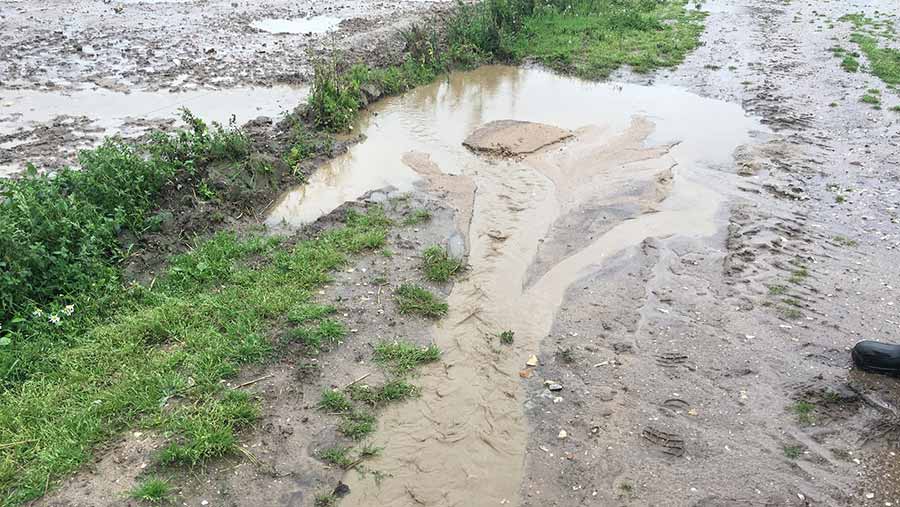
5. Make sure you record and demonstrate actions taken, including photographs. This doesn’t have to be a big document.
AHDB Pork’s soil management plan provides a simple template to help plan and review on a regular basis (at least annually) and this information is also very useful to landlords.
6. Silt traps are one of the practical options to help manage water flow and minimise erosion risk. They collect nutrients, sediment and phosphates that can then be spread back on the land.
7. Buffer strips are another option that can be tied in with Environmental Stewardship. They need to be large enough to deal with any potential run-off and traffic needs to be kept off so as not to create wheelings.
You can put in mixes to benefit biodiversity or leave areas tussocky, which reduces run-off.
8. Where tracks and gateways are causing an issue with water flow, you can put in small road humps or cross-drains and bund old gateways.
9. Avoid manure storage in an SPZ1. And where muck is spread in a SPZ1, it should not be spread within 50m of a borehole and should be incorporated within 24 hours.
Mark the location on a map and don’t return to the same area within two years.
10. Get in touch with your water company’s catchment adviser or your local rivers trust if you are unsure.
Communication is key and these organisations are keen for more producers to get in touch for confidential advice and, in some cases, they can provide funding to help with practical solutions to improve environmental management.
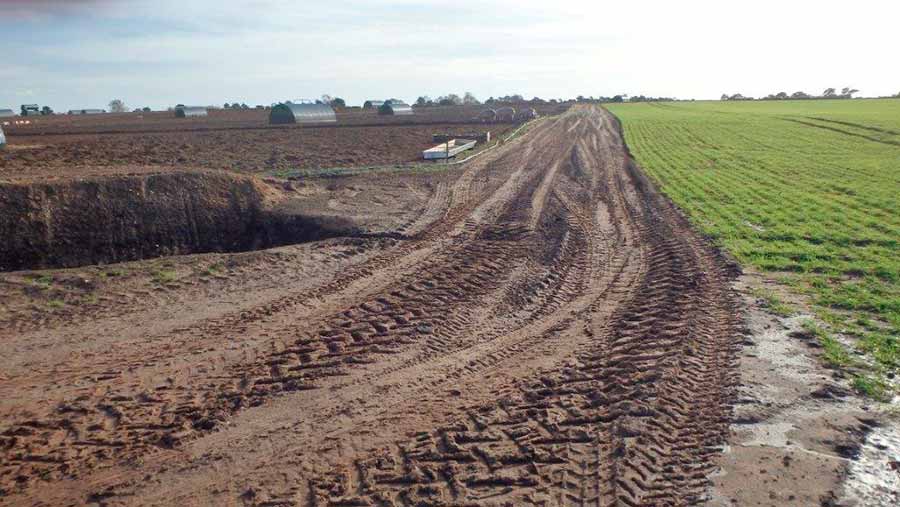
Groundwater source protection zones
Source protection zones (SPZs) show the risk of contamination from any activities – for example, slurry spreading – that may cause pollution in that area. The closer the activity is to the drinking water source – for example, borehole – the greater the risk.
As a general rule it is encouraged that pig producers avoid zone 1.
- Inner zone (zone 1) – 50-day travel time from the polluting activity to the drinking water source
- Outer zone (zone 2) – 400 days travel time
- Total catchment (zone 3) – The area around a supply source within which all groundwater is presumed to end up at the point of abstraction
- Special interest zone – Previously this term represented surface water such as streams that drain into underground aquifers and feed groundwater supplies such as boreholes. In the future this zone will be incorporated into the ones above
- Find out which zone you are in by visiting the Environment Agency website and clicking on groundwater.
Case study: Mark and Paul Hayward
Mark and Paul Hayward of Dingley Dell farm near the Suffolk coast and have been strip-grazing their sows for four years, moving them every six months.
“If you’re moving on to a site for the first time, the idea is to grass the whole site, then split it down into strips and run sows on alternate strips of the field while the other grass becomes established. You then ‘flip’ onto those other strips, usually going into the winter, and re-establish the grass on the original strips, ready to flip back after winter.”
You need equal strips so, when you flip, you don’t need to use extra wire, as everything’s the same size, they say.
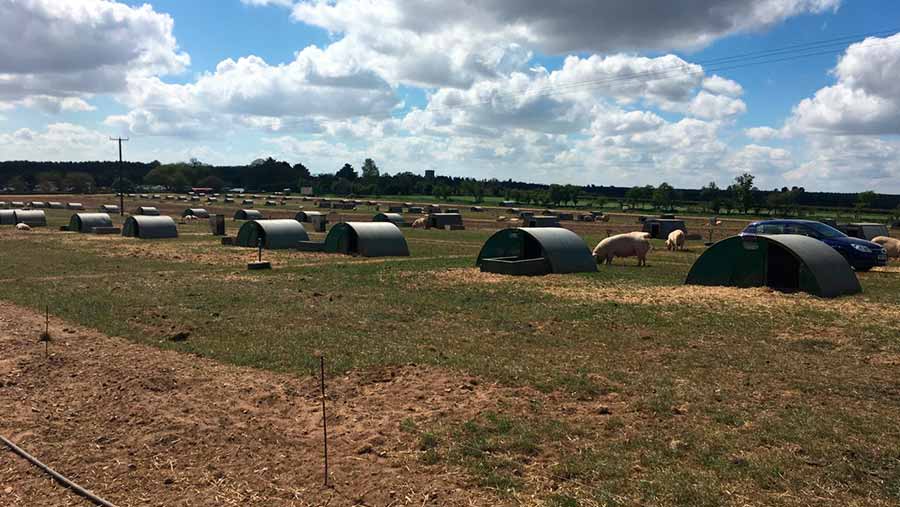
“We’re using tyres as a sturdy base for paddock corner posts rather than putting posts into the ground, which makes it much easier when we move them.
“The benefits have included reduced wind erosion of the soil, particularly on a sandy site like ours, and you have the ability for the land to drain better. There seems to be a general production lift, as well as the morale boost to staff. It also means the unit looks much more tidy, which is important for us as we have a lot of visitors.”
Next, they are looking to measure the effect on nitrates in the soil and whether the system deals with soil erosion better.
“We’re challenging the traditional model of outdoor pig production and, this year, have also planted flower mixes to support bees and other insects. We want to be farming with nature and help demonstrate that we are running a sustainable business.”
Case study: Chris Fogden
Chris Fogden has 1,300 outdoor breeding sows in Suffolk, selling most of the progeny at 7kg. The unit is in an SPZ1 which, while discouraged, doesn’t mean the site can’t be managed to protect water sources.
He has improved track management on the site and dug silt traps in appropriate locations to capture water – and the sediment and nutrients it carries with it – before it can reach any water sources.
“The land is very sandy and in heavy rain the trackway used to channel water and silt down onto the road. So we built in humps and dug holes beside the track to act as silt traps to divert the flow of water.”

However, it’s worth bearing in mind that water usually finds another path, he notes.
“It now travels onto the field a little. Even so, it has been a big improvement overall.”
The farm’s latest management change has been to introduce strip grazing, following the work Mark Hayward has done.
“We set up the new layout in September and are looking forward to seeing how it benefits the business, both in managing the soil and water run-off and in helping with farrowing performance.
“This summer, sow productivity seemed to struggle and it makes sense that providing fresh ground more often should help. Sows will now be moved onto fresh ground every six months when we change grazing strips, rather than every two years when we move sites, as before.”
More information on soils
Contact AHDB Pork’s Basis-qualified KE manager Andrew Palmer on 07976 443 454 or Kate Mellor on 07973 701 202.
For the soil management guide and plan as well as videos on soil management and strip grazing, visit AHDB Pork.
There are also workshops in November for all farming sectors, as part of AHDB’s GREAT Soils programme, to explore the practicalities of better soil management and shape the direction of new research on soil health.

